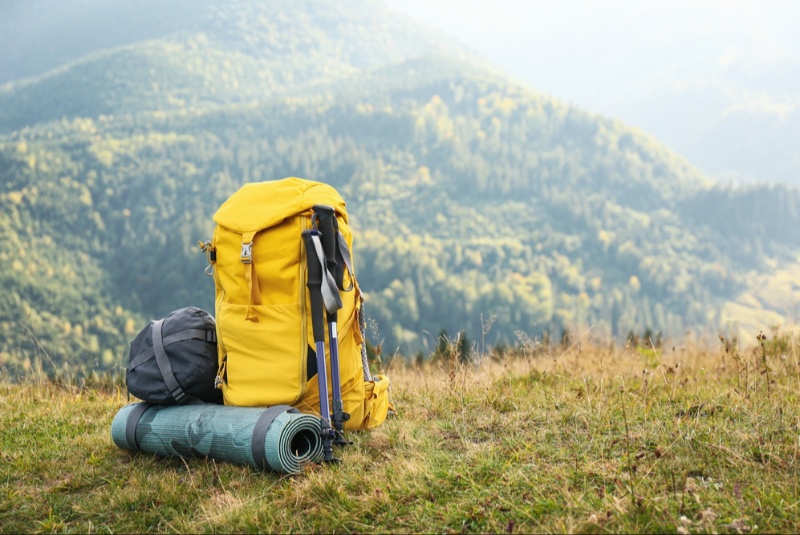When planning for summer trails, the importance of choosing the right hiking backpack cannot be overstated. A perfect backpack can transform your hiking experience, offering comfort, efficiency, and convenience. Summer trails present unique challenges and requirements, from hydration needs to managing sweat and carrying lightweight gear. This guide delves deep into the aspects you should consider to select the ideal backpack for your summer adventures. From understanding the importance of weight distribution and ventilation to selecting the right size and features, we cover all you need to know to make an informed decision. Let's embark on this journey to find your perfect summer hiking companion.
Understanding Your Needs
Before diving into the myriad of backpack options, it's crucial to assess your hiking needs. Consider the length of your hikes, the type of terrain, and the specific gear you'll need to carry. Summer hiking often means longer daylight hours, which could translate to longer treks. Therefore, your backpack should be capable of carrying sufficient water, sunscreen, extra clothing for changing weather conditions, and perhaps even a lightweight shelter for those extended day hikes or overnight stays. Evaluate the capacity, pockets, and attachment points you'll need to carry all your essentials comfortably and accessibly.
Importance of Weight Distribution
A well-designed hiking backpack will distribute weight evenly across your body to prevent strain and discomfort. For summer hiking, when you're likely to wear lighter clothing, this becomes even more important to avoid pressure points and chafing. Look for backpacks with adjustable, padded shoulder straps, a supportive hip belt, and a sternum strap. These features help distribute the load more evenly across your body, making heavy loads feel lighter and more manageable, even on the most challenging trails.
Ventilation and Breathability
One of the key challenges of summer hiking is managing sweat and maintaining comfort in the heat. A backpack with good ventilation can make a significant difference. Look for designs that feature a suspended mesh back panel, which creates a space between your back and the pack, allowing for air flow and reducing sweat. Additionally, breathable materials and ventilated shoulder and hip straps will enhance comfort and keep you cooler as you hike.
Choosing the Right Size
The size of your backpack is determined by the volume of gear you need to carry and the length of your hike. For day hikes, a backpack ranging from 20 to 30 liters is usually sufficient. For overnight or multi-day hikes, you might need something larger, between 30 to 50 liters. Remember, a bigger backpack encourages packing unnecessary items, so choose the size that fits your needs without offering too much temptation to overpack.

Durability and Material
Summer trails can take you through a variety of terrains, from rocky paths to dense underbrush, so your backpack needs to be tough. Look for materials that are both lightweight and durable, such as high-denier nylon or polyester. Additionally, considering the possibility of summer showers, water-resistant or waterproof materials and zippers can protect your gear from unexpected rain.
Comfort and Fit
The fit of your backpack is as crucial as its features. A good fit ensures comfort and reduces the risk of injury. Most quality backpacks come in various sizes or are adjustable to fit different torso lengths. Additionally, many offer adjustable waist and chest straps to fine-tune the fit. When trying on backpacks, wear the type of clothing you'd hike in and load the backpack with weight to accurately assess its comfort and fit.
Essential Features for Summer Hiking
Summer hiking backpacks should have specific features to enhance your trail experience. Hydration reservoirs or easy access to water bottles are a must. Pockets and compartments for snacks, maps, and sunscreen keep essentials at your fingertips. Moreover, lightweight, yet sturdy, frames can provide the necessary support without adding unnecessary weight. Reflective materials and bright colors can also enhance safety, making you more visible to others during your hike.
Price vs. Quality
While it's tempting to choose a backpack based on price alone, investing in quality can enhance your hiking experience and ensure your backpack lasts for many summers to come. Higher-priced backpacks often offer better materials, comfort, and durability. However, there are budget-friendly options that do not compromise much on quality. It's essential to find a balance between cost and the features you need for your summer hiking adventures.
Where to Buy
Purchasing a hiking backpack offers the opportunity to try different models and fits. Outdoor retail stores are great places to start, where you can get professional advice and physically assess backpacks. Online shopping can provide more variety and often better deals, but make sure to check return policies, especially if you're unsure about the fit. Reading reviews and watching video reviews can also provide valuable insights into how a backpack performs in real-world conditions.
Choosing the right hiking backpack for your summer trails is a balance of practicality, comfort, and personal preference. By considering your needs, focusing on essential features, and not compromising on comfort and durability, you can find the perfect backpack that will enhance your hiking experience. Remember, the best backpack for you is one that you hardly notice on your back, allowing you to fully immerse yourself in the beauty and tranquility of summer hiking. Happy trails!




